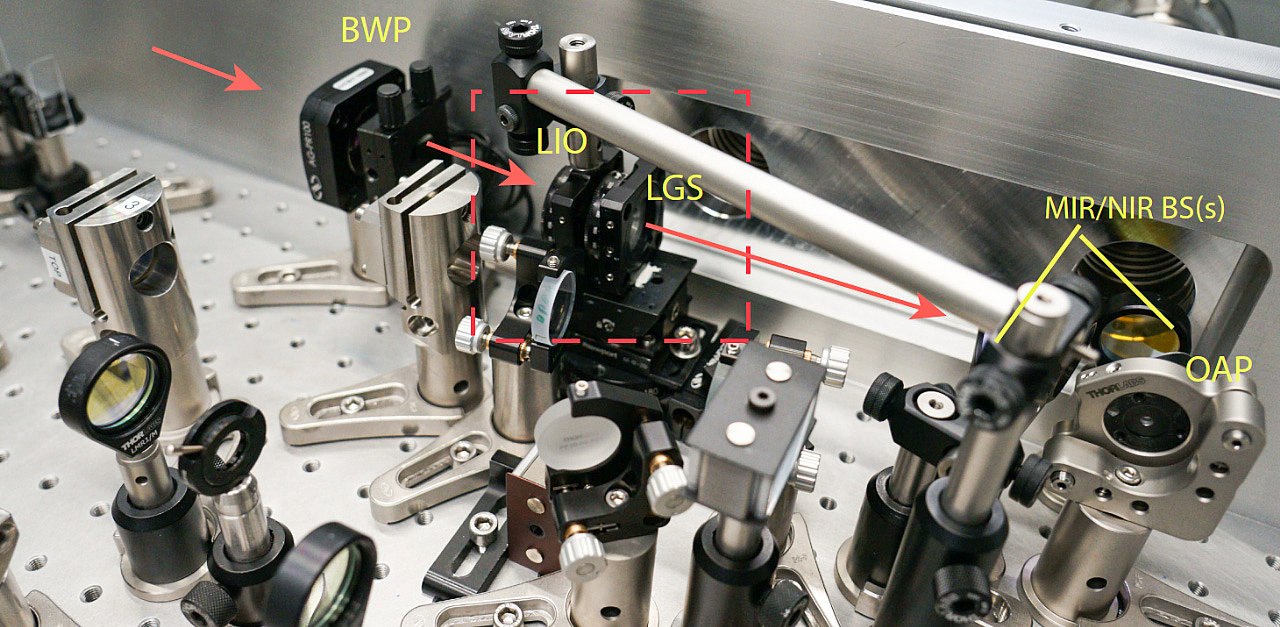In recent years, high-power sources of 10-fs-scale near-infrared pulses have opened new avenues for broadband, coherent mid-infrared spectroscopy. In particular, intrapulse difference-frequency generation (IPDFG) driven by these laser sources affords combinations of properties desirable for molecular vibrational spectroscopy: broad spectral coverage, high brilliance, and spatial and temporal coherence. Yet, unifying these in a robust and compact radiation source has remained a key challenge.
In their new paper, Hadil Kassab et al. address this need by driving IPDFG in a multi-crystal in-line geometry. As the primary light source, the authors used the 100-W average-power-level train of 10-fs-scale pulses, spectrally centered at 1 µm, emitted by an in-house developed, nonlinearly post-compressed Yb:YAG thin-disk oscillator. Polarization tailoring of the driving pulses using a bichromatic waveplate followed by a sequence of two crystals, LiIO3 and LiGaS2, resulted in the simultaneous coverage of the 800-cm−1-to-3000-cm−1 spectral range (at -30-dB intensity) with 130 mW of average power. The authors demonstrated that optical-phase coherence is maintained in this in-line geometry, in theory and experiment, the latter employing ultra-broadband electro-optic sampling.
These results pave the way toward coherent spectroscopy schemes like field-resolved and frequency-comb spectroscopy, as well as nonlinear, ultrafast spectroscopy – over the entire infrared molecular fingerprint region.
Original publication:
In-line synthesis of multi-octave phase-stable infrared light
H. Kassab, S. Gröbmeyer, W. Schweinberger, C. Hofer, P. Steinleitner, M. Högner, T. Amotchkina, D. Gerz, M. Knorr, R. Huber, N. Karpowicz, I. Pupeza
Optics Express 31, 24862 (2023)
